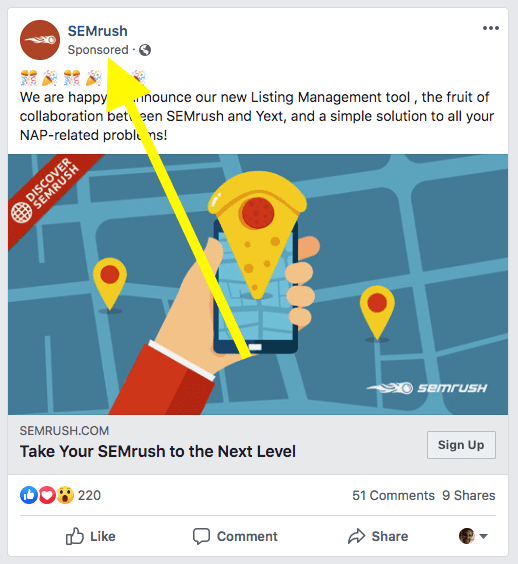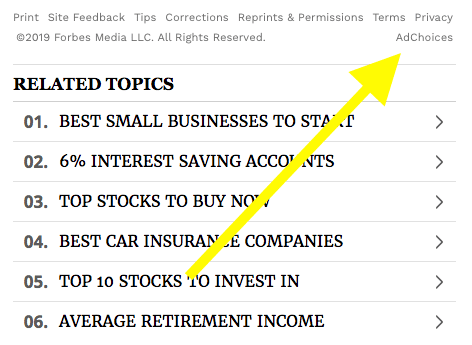Native advertising is the use of paid ads that match the look, feel, and function of the website they appear on. Native ads are often used in social media feeds, or as recommended content on a web page. Unlike traditional display ads, native ads don’t really look like ads. Native ads expose the reader to advertising content in a subtle way.
What do Native Ads look like?
“In-Feed” Ads appear in your news feed on social networks (ie.your Facebook or Twitter feed)

Search & Promoted Listings appear at the top of your Google search results.

Content Recommendations – Recommended articles or videos that appear below the article you just read or video you just watched.

Do Native Ads Create An Ethical Dilemma?
Because native ads look like regular site content, there is the ethical dilemma of whether or not a user realizes they are about to click on a paid advertisement. It’s up to the FTC (Federal Trade Commission) and the IAB (Interactive Advertising Bureau), to regulate the use of native ads to ensure that consumers are not misled. Although native ads look like regular site content, you can normally tell it is an advertisement from a few telltales such as: Sponsored, Recommended, Adchoices, or Ad.

YouTube would argue that “recommended” videos are not paid for by advertisers, however, the logic behind the “recommended videos” algorithm is to get users to spend more time on YouTube watching videos which display ads. So in a roundabout way, these “recommended” videos are indeed sponsored.
Why Are Online Marketers Using Native Ads?
According to Native Advertising Publisher Outbrain:
1. Native advertising works. Consumers look at native ads 53% more than display ads. Native ads create an 18% increase in purchase intent, and the visual engagement with native ads is the same, and even slightly higher, than the original editorial content.
2. Native advertising fights ad fatigue. Ad fatigue is what happens when the audience gets bored with seeing ads. After a while, they simply stop paying attention. Native ads are brand exposure cloaked in editorial content, so they don’t tire out the audience. As long as the content is relevant and interesting, native advertising engages the audience.
3. Consumers know that native ads are a form of advertising, but they don’t care! In a recent study at Stanford University, researchers found that native advertising fools nobody. Consumers are well aware that they are viewing a form of advertising, however, native ads still have a significant effect on purchase behavior.
